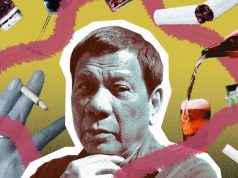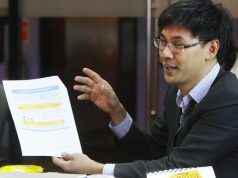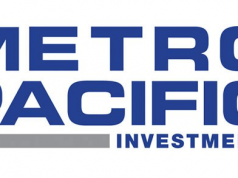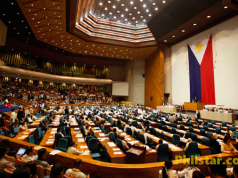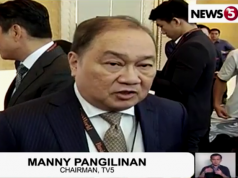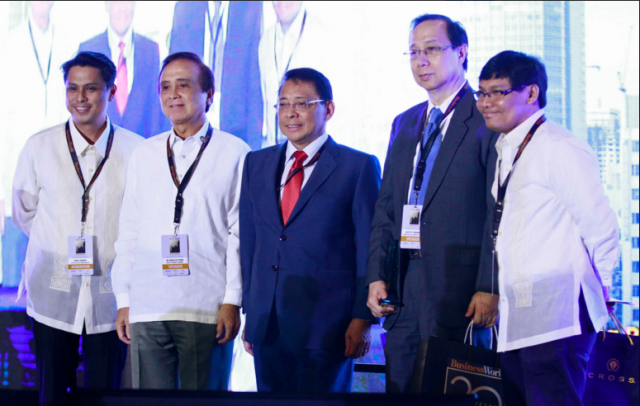
MANILA, Philippines – Budget Secretary Benjamin Diokno expressed confidence Friday the funding for what he billed the Philippines’ “most ambitious” infrastructure blueprint in decades will be available, with the crucial Comprehensive Tax Reform Program (CTRP) bill passed by Congress “this May, at least in the House of Representatives.”
While giving assurances the Duterte administration will ensure that infrastructure will drive, not hinder growth, Diokno said the government has carefully calibrated the timing of the fund inflows – from a combination of annual national budgets, official development assistance (ODA) and private investments – with the phasing of the key projects under the so-called “Build Build Build” master plan.
Speaking at a session on “Financing the Build-up” at the BusinessWorld Economic Forum at The Shangri-la at The Fort, he said “we will continue to guard against underspending,” which he called “the Waterloo of the previous administration,” while playing down fears the massive infrastructure projects might plunge the government into debt beyond its projections.
According to Diokno, the government has pinned much hope on the CTRP, stressing how the “present tax system is outdated and out of sync.”
It is so confident about the success of the CTRP that it has made a key plank of its development program a substantial rise in revenue effort – total revenue as percentage of GDP.
The government, he said, will also borrow money to finance the deficit, pointing out that fears of unsustainable debt loads are overblown because, as things stand, the country’s debt to GDP ratio as of 2016 was 42% versus much higher ratios in countries from Japan to Greece. He said the 42% is projected to go down to 26% when the Duterte administration bows out in 2022.
Hybrid PPP, SCTEx model
In terms of financing development particularly infrastructure, the government prefers a “hybrid” similar to the current model used in the SCTEx, according to him. Businessman Manuel V. Pangilinan briefly discussed this hybrid PPP in his keynote speech earlier at the forum, as well as why the Subic-Clark Expressway model is a good template. “This tollway was built by government on JICA financing, and ultimately privatized by way of a concession agreement, not O & M. From our perspective, this was a win-win formula for both government and business: first, the tollways got done; second, tollway fees paid to government are sufficient to service JICA’s long-term loan; third, the concessionaire and not the government, shoulders the O & M expenses; fourth, the concession agreement enhances the equity value of our tollways group because it confers a quasi-ownership interest in the business – which an O & M contract doesn’t.”

Speaking at the same session with Diokno, Vice Chairman Francisco Sebastian of GT Capital Holdings Inc. said the private sector has a good track record in financing development in the Philippines, noting how key, major investments made by the private sector now run water distribution systems and toll roads.
The private sector, he added, bore the brunt of resolving the power crisis; and singled out Mindanao’s experience as best proof of that.
Sebastian shared Diokno’s optimism the ambitious infrastructure program can be financed, with much resources coming from the private sector. He answered his question of “Is there enough long-term money around, private or public?” by asserting that his optimism rests on viewing the macroeconomic fundamentals.
“Interest rates are low, will stay low; inflation rates are likely to remain low and benign; the peso is stable and forex reserves are sufficient.” These three are interlinked, and “create a virtuous cycle” for an environment conducive to infrastructure development, he explained.
Besides these three, all other fundamentals are healthy, Sebastian noted: the savings rate is improving; bank lending rates are low; the debt to GDP ratio is at a manageable level.
Caveat: Consider magnitude
Sebastian, however, had a serious caveat: magnitude.
Given the ambitious scope and complicatedness of “Build Build Build,” it is important for government to make sure the resources are available when needed at terms that are fair and manageable, and that no huge unforeseen costs will weigh on the public shoulder. Otherwise, he said, “we will either run short of money, or be forced to borrow” drastically, thus driving up interest rates.
To make all the key elements come together, Sebastian listed certain “musts”: first, pass the CTRP; second, tap into the best, most cost-efficient mix of ODAs, including getting the best offers from countries like Japan and China; and third, get the multilaterals (ADB, AIIB) into the infrastructure game.
The Philippines, he said, “has the history of the longest BOT in Asia,” noting that it was the country that “invented” this model of financing infrastructure.
Meanwhile, Sebastian said, other measures could enlarge the pool of funding sources for development, citing the Philippine Stock Exchange’s move to amend its rules in order to encourage investors.
He said the GSIS sits on a huge private equity fund that is being tapped for viable investments. Entities like Sunlife Financial recently signaled interest in investing in infrastructure.
Sebastian, however, had a word of caution to government: even as it rushes to court investors, it must guarantee that “terms are adhered to and complied with” and rules are not changed whimsically, “and held steady.”
In sum, said Sebastian, a combination of measures to develop: the Philippine capital markets, new financial products and cooperation between government agencies and multilaterals, would go a long way to make more resources available for development.
In the open forum, someone asked the speakers for comment on proposals to tap into the OFW funds in order to channel more resources to infra projects.
Diokno said he supported the notion of floating an “Infrastructure Fund,” or IOUs that migrant workers could invest in, and said it was an enticing thought to have people “invest in your country.” However, he said it was a matter for the Bureau of Treasury, not his office, to study.
Sebastian flagged the need to consider the “inherent risks” of infrastructure projects, adding that there is need “to ensure the risks are managed,” especially considering that “OFW money is hard-earned.”
Also speaking at the BusinessWorld Forum’s session on “Financing the Build-up” was Oliver Tan, chief finance officer of construction giant Megawide Corp.
Drawing into Megawide’s own experience in handling PPP projects for government, Tan said the private sector has proven how much more cost-efficient taxpayer money can be used if qualified private contractors are tapped to carry out such key requirements as school building.
Megawide, he said, had proven how public schools can be built much cheaper with better quality when it participated in the Public Schools Infrastructure Project.
Tan added that Megawide is looking to prove how much better the private sector can do significant infrastructure projects with the Mactan Cebu International Airport which it was awarded to, and which is targeted for completion in mid-2018.




